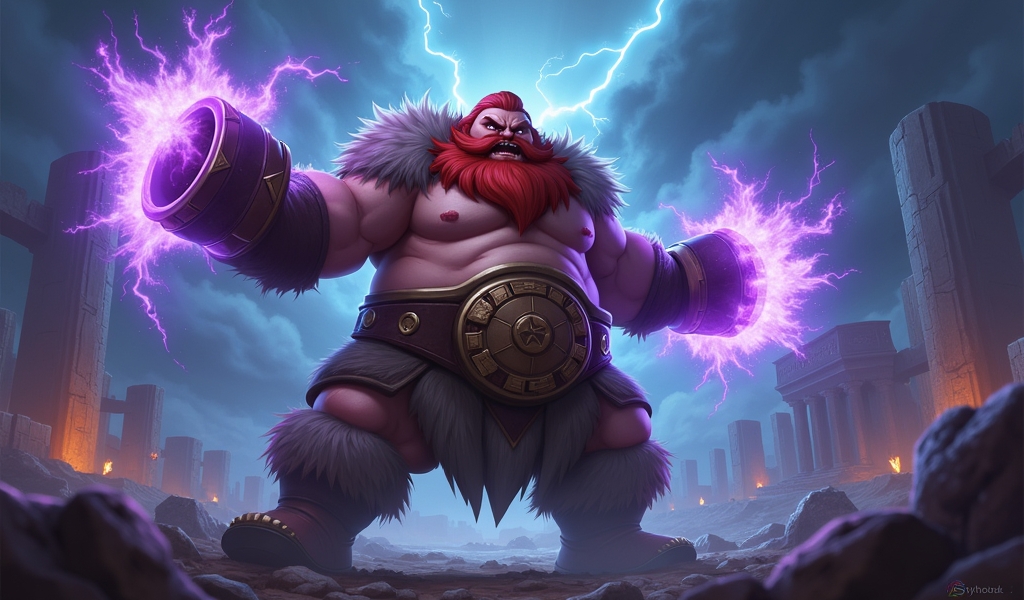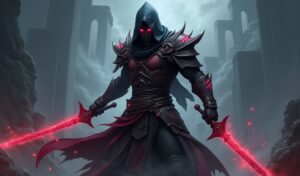Overview
How to play Gragas effectively requires mastering barrel placement, engage tactics, and utilizing his game-changing ultimate to create opportunities for your team. This versatile champion can be built as AP or tank and excels in multiple roles, with his crowd control abilities making him particularly strong for objective control and creating impactful plays across the map.
Table of Contents
Are you looking to add a versatile, high-impact champion to your League of Legends arsenal? Look no further than Gragas, the Rabble Rouser. With his unique blend of crowd control, burst damage, and surprising mobility, Gragas has remained a relevant pick across multiple metas and can be effectively played in almost every role – jungle, mid, top, and even support.
In the current meta, Gragas sits in a comfortable position. While not overpowered, his flexible playstyle and game-changing ultimate make him a solid choice for players looking to climb the ranked ladder. As someone who’s taken Gragas from the depths of low elo all the way to Diamond, I can confidently say that mastering how to play Gragas can significantly improve your win rate and overall game impact.
Let’s dive into the essential tips that will transform your Gragas gameplay and help you dominate the Rift.
Understanding Gragas’s Kit and Playstyle
Before we get into advanced techniques, let’s break down what makes Gragas tick:
- Passive (Happy Hour): Periodically, Gragas’s next ability heals him based on his maximum health, providing surprising sustain in lane and jungle.
- Q (Barrel Roll): Throws a barrel that can be detonated for area damage, slowing enemies caught in the blast.
- W (Drunken Rage): Gragas chugs from his barrel, reducing incoming damage and empowering his next auto attack with bonus damage and range.
- E (Body Slam): Charges forward, dealing damage and stunning the first enemy hit.
- R (Explosive Cask): Hurls a massive barrel that knocks enemies away from the center of impact.
Gragas excels at area control, disruption, and creating pick opportunities. His weaknesses include vulnerability when his abilities are on cooldown and reliance on proper positioning to maximize effectiveness.
Tip #1: Master the Art of Barrel Placement
The difference between an average Gragas and a great one often comes down to barrel management. Your Q (Barrel Roll) is more than just a damage ability – it’s a zoning tool that can control entire sections of a lane or jungle corridor.
Place barrels in choke points or in the path your enemy needs to take to farm. This creates a no-win situation: they either take damage from your barrel or lose CS by avoiding it. In team fights, strategically placed barrels can zone enemies away from objectives or force them into unfavorable positions.
For maximum damage, try to let your barrel ferment to full power before detonating it. However, don’t be too greedy – a half-charged barrel that hits is better than a fully-charged one that misses.
A common mistake I see many Gragas players make is telegraphing their barrel placements. Mix up your patterns and occasionally place barrels in bushes for surprise zone control. Remember that barrels also provide temporary vision, making them valuable for checking objectives like Baron or Dragon safely.

Tip #2: Perfect Your Engage and Disengage Tactics
Body Slam (E) is arguably Gragas’s most versatile ability. It serves as both your primary engage tool and your escape mechanism, so using it wisely is crucial.
When engaging, look for opportunities to hit multiple enemies with a single Body Slam. The stun duration is the same regardless of how many targets you hit, but the area damage can significantly contribute to your team’s burst potential.
The Flash + E combo is essential for any serious Gragas player. This technique allows you to bypass frontline champions and stun priority targets, often catching opponents completely off guard. Practice the timing in the Practice Tool until it becomes second nature.
For disengaging, remember that Body Slam can get you over thin walls. Memorize which walls you can cross with E alone – this knowledge can save your life when escaping through the jungle.
If you enjoy champions with strong engage potential, you might also want to check out Alistar’s engaging playstyle or Blitzcrank’s hook mechanics for similar playstyles.
Tip #3: Game-Changing Ultimate Usage
Explosive Cask (R) is one of the most powerful disruption tools in League of Legends when used correctly. There are several ways to utilize this ability effectively:
The “Insec” play (named after the famous Lee Sin technique) involves getting behind an enemy carry with Body Slam or Flash, then using your ultimate to knock them toward your team. This isolates the target and almost guarantees a kill if your team follows up.
In team fights, aim to separate the enemy team with your ultimate, isolating their frontline from the backline damage dealers. A well-placed ultimate can essentially create a temporary 5v2 or 5v3 situation.
I personally spend at least 10 minutes in Practice Tool before each ranked session practicing Gragas combos, particularly R+Flash techniques. This muscle memory is invaluable in high-pressure situations.
Mastering these combos puts Gragas in a similar category to Galio’s playmaking potential, though each has their distinct applications.
Tip #4: Optimize Your Build Path
Gragas’s build versatility is one of his greatest strengths. Depending on your role and team needs, you can build him as an AP burst mage, a tank, or something in between.
For jungle Gragas, I typically start with Night Harvester or Hextech Rocketbelt for the additional gap-closing potential, followed by Zhonya’s Hourglass for survivability. Mid lane Gragas can follow a similar path but might prioritize Luden’s Echo against squishier team compositions.
Support Gragas works best with Evenshroud or Locket of the Iron Solari, focusing on providing utility rather than damage. Top lane Gragas can go either way depending on matchup – full AP against squishier opponents or tank items like Sunfire Aegis against heavy AD compositions.
For runes, Electrocute provides burst potential for mid and jungle, while Aftershock offers tankiness for top and support roles. Phase Rush is an underrated option that helps with positioning for both engages and escapes.
Recognizing your power spikes is crucial. Gragas is particularly strong at level 3 (when you have all basic abilities), level 6 (ultimate), and when completing your mythic item.
If you’re interested in other tanky champions, Dr. Mundo’s resilient playstyle and Braum’s protective abilities offer alternative approaches to frontline play.

Tip #5: Map Presence and Objective Control
Gragas’s mobility and crowd control make him excellent for controlling objectives and creating map pressure.
When jungling, use your Body Slam for quick clear speeds and to navigate the map efficiently. Your ganks are particularly effective when you can approach from behind and force the enemy to run through your barrel.
For mid lane Gragas, look to shove waves with your Q and then roam to side lanes. Your ability to appear suddenly with E + Flash makes your ganks particularly threatening.
In the late game, position yourself to either engage on enemy carries or peel for your own, depending on team composition. Your ultimate can completely change the outcome of fights around Baron or Elder Dragon by separating key enemy champions from their team.
This objective control strategy is similar to what you might see in Amumu’s teamfight presence, though Gragas offers more versatility in his approach.
Conclusion
Mastering how to play Gragas requires practice, but the versatility and game impact he provides make the effort worthwhile. Focus on perfecting your barrel placement, engage timing, and ultimate usage to see immediate improvements in your gameplay.
For those serious about climbing with Gragas, I recommend recording your games and analyzing your positioning and ability usage. Pay particular attention to missed opportunities for game-changing ultimates and sub-optimal barrel placements.
If you’re looking to expand your champion pool with other versatile picks, consider trying Garen’s straightforward gameplay or Gangplank’s high-skill ceiling for different but equally impactful playstyles.
Remember, a great Gragas player isn’t just about landing flashy combos – it’s about controlling the flow of the game and creating opportunities for your team. Now get out there, grab your barrel, and start dominating the Rift with how to play Gragas mastery!
Frequently Asked Questions
Is Gragas better as AP or tank?
Both builds are viable depending on your team composition and role. AP Gragas excels in mid lane and jungle where burst damage is valued, while tank Gragas works well in top lane and support roles. Generally, I recommend a hybrid approach with 2-3 AP items followed by defensive items. This gives you enough damage to threaten carries while providing the survivability needed to execute your combos in teamfights. According to official League statistics, AP builds currently have slightly higher win rates in higher elos.
What is Gragas’s best role in the current meta?
Jungle is currently Gragas’s strongest role, offering the best balance of his strengths. His healthy clear, strong ganks, and objective control make him particularly effective in the jungle. Mid lane is a close second, especially as a counter-pick to immobile mages. However, his versatility means he can be effectively played in all roles depending on your playstyle and team needs.
What combos should I master first when learning Gragas?
Start with the basic E + Q combo (Body Slam into barrel) for reliable damage. Then progress to E + W + Auto for single-target burst. Once comfortable, practice the E + Flash for extended engage range. Finally, master the advanced R + Flash technique for unexpected engages and the “Insec” combo (getting behind an enemy and using R to knock them into your team). Practice these in the Training Tool before taking them into actual games.
How do I deal with Gragas’s mana problems in the early game?
Mana management is crucial on Gragas. Start with Corrupting Potion in lane roles, or make sure to pick up the blue buff regularly in jungle. Consider Presence of Mind in your rune page for mana sustenance after takedowns. In lane, use your passive effectively for sustain rather than spamming abilities on the wave. Building Lost Chapter early (for mid lane) also helps address mana issues. As demonstrated by pro players on ProBuilds, mana issues typically become less relevant after your first item completion.
Who are Gragas’s hardest counters?
Champions with high mobility that can dodge Gragas’s abilities present the biggest challenge. Specifically, Yasuo, Kassadin, and Fizz can be difficult matchups in mid lane due to their ability to avoid your combo. In the jungle, fast invaders like Lee Sin and Graves can pressure you before your first clear. When facing these counters, focus on playing reactively rather than initiating, and look to impact the map through roams and objective control rather than direct confrontation.




